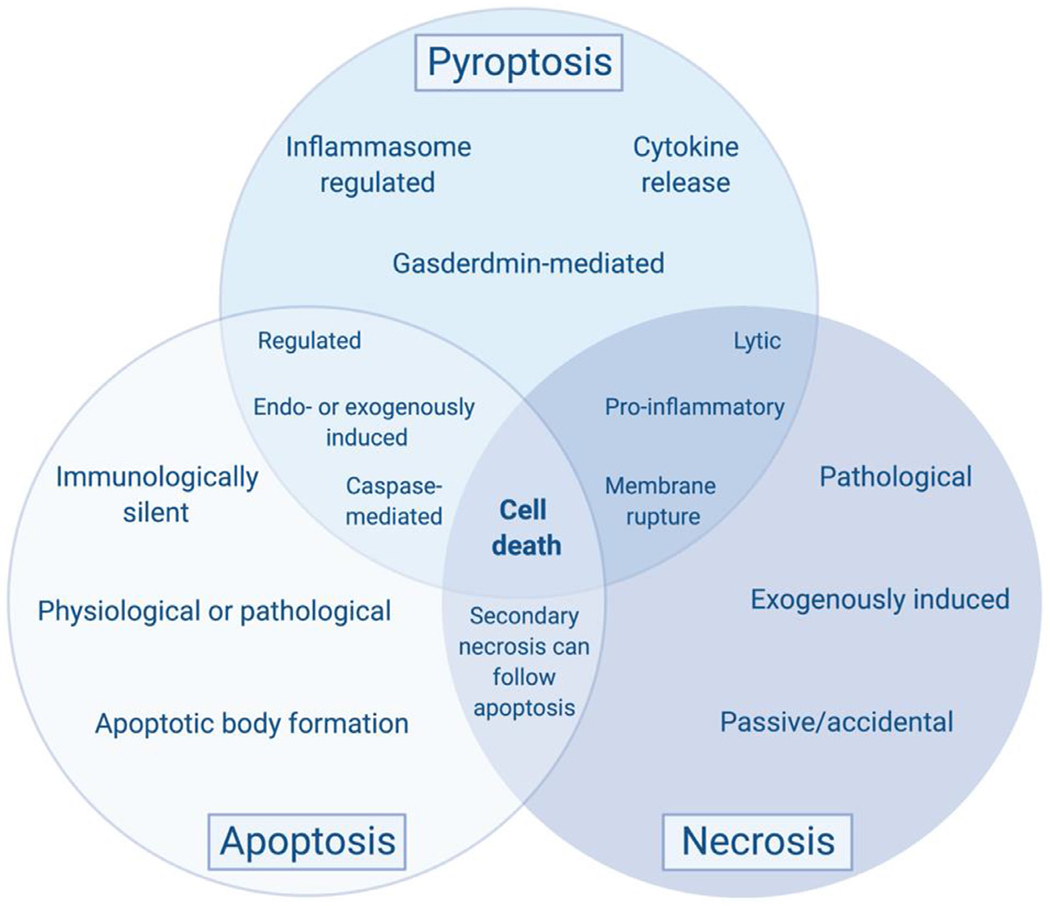Fig 2.

Comparison of necrosis, apoptosis, and pyroptosis. Apoptosis and pyroptosis, 2 forms of programmed cell death, share many commonalties with each other and with an accidental form of cell death, necrosis. These are not meant as absolutes, as there are many examples where these statements might not necessarily hold true, dependent on cell type, deadly trigger, and molecular platforms available. However, this framework is helpful to break these forms of cell death into distinct categories with general characteristics. Pyroptosis is typically inflammasome- and gasdermin-mediated, resulting in the release of inflammatory cytokines. Similar to apoptosis, it is highly regulated by caspase enzymes and can be triggered by both endogenous and exogenous triggers. However, apoptosis is immunologically silent resulting in apoptotic body formation, unlike the pro-inflammatory pyroptotic phenotype. Further, apoptosis can occur as a consequence of normal physiology, such as during development and normal cellular turnover, or in response to a harmful trigger or pathologic insult. Necrosis shares its greatest commonalties to pyroptosis as it is lytic, resulting in membrane rupture, and results in the pro-inflammatory release of intracellular contents into the extracellular environment. However, unlike either pyroptosis or apoptosis, it is accidental, not resulting from mechanistic regulation. Necrosis is exogenously induced from physical, chemical, or mechanical stimuli causing immediate cellular demise from pathologic injury. Interestingly, a process known as secondary necrosis can follow apoptosis if the apoptotic bodies cannot be phagocytosed, which is characterized by lytic release of intracellular material. Created with BioRender.com. (For interpretation of the references to color in this figure legend, the reader is referred to the Web version of this article.)
